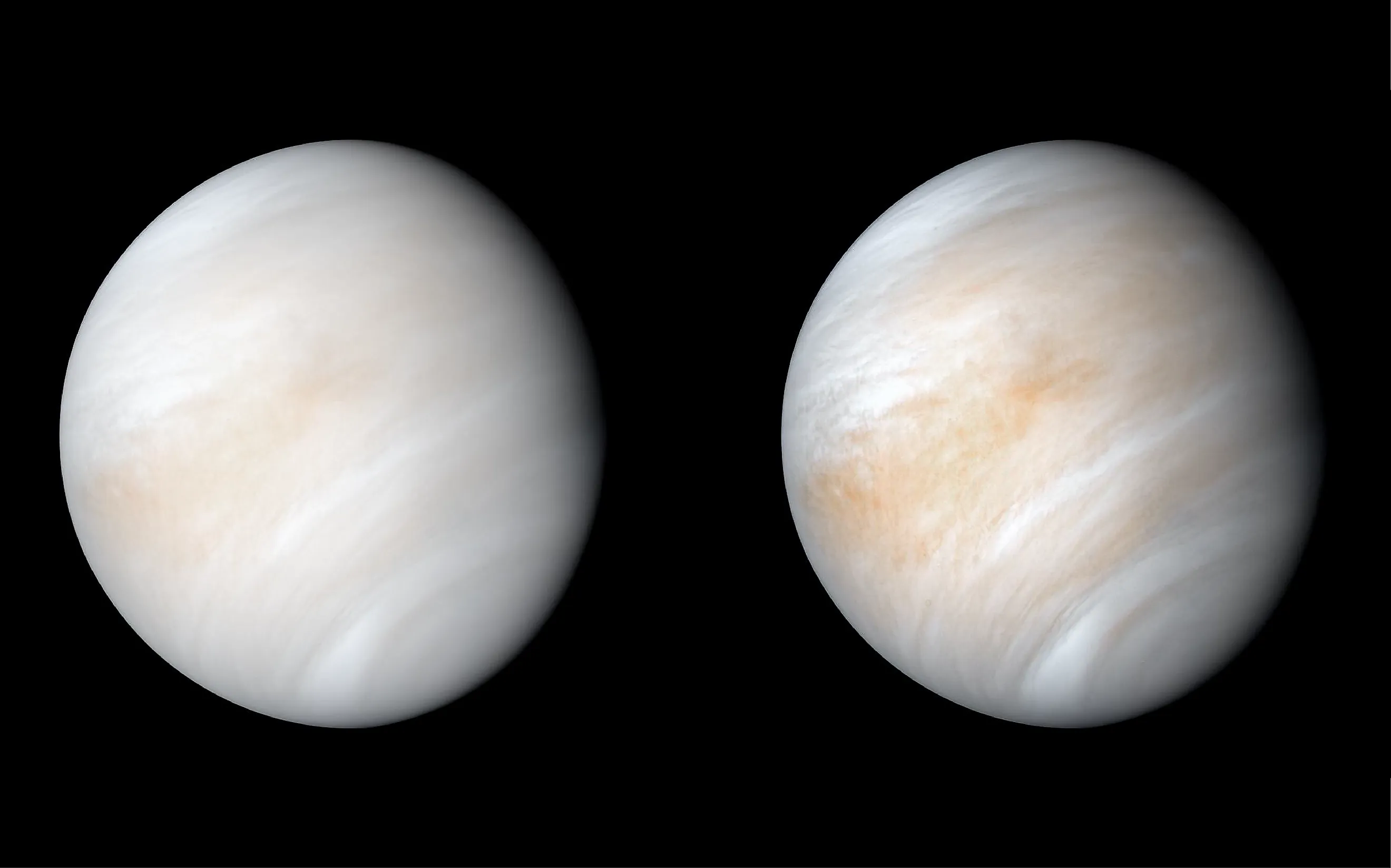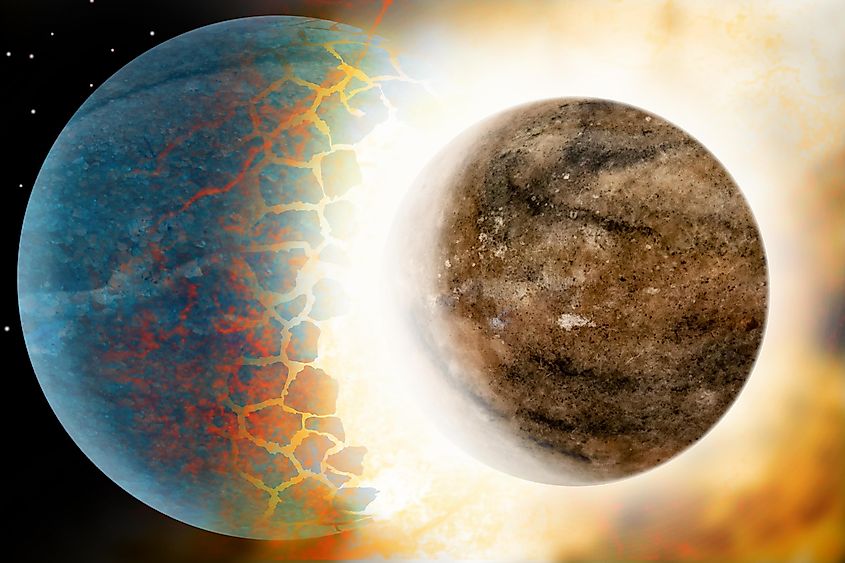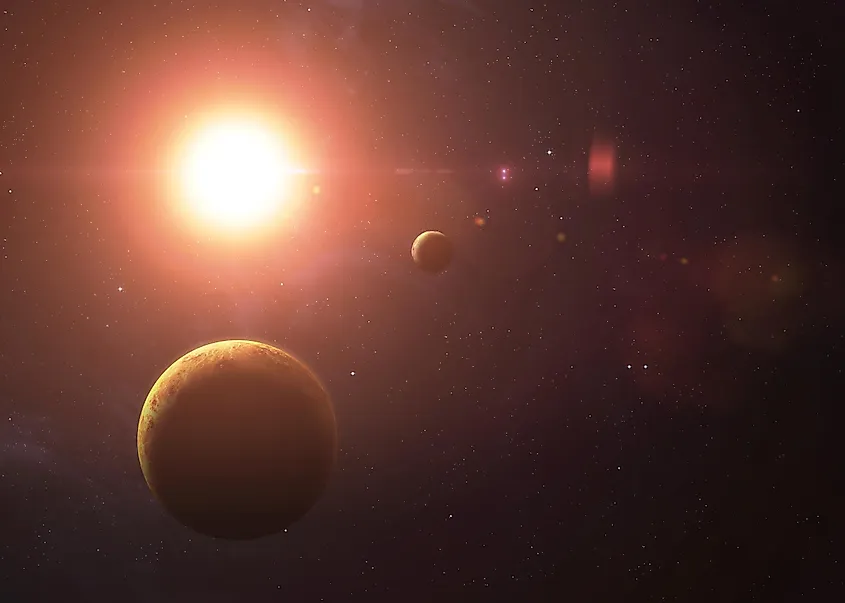
The Only Planet That Rotates Clockwise
Nearly all objects in our solar system, including planets, asteroids, and satellites, revolve around the sun and rotate on their axes counterclockwise. This uniform motion suggests formation from a rotating planetary disk around the sun, where conservation of angular momentum caused objects closer to the sun to orbit faster, influencing planets to rotate in the same direction as their orbit.
Unlike other planets in our solar system, Venus rotates clockwise, and Uranus rotates ambiguously due to its extreme axial tilt. Additionally, six planetary satellites exhibit retrograde motion, likely because they're captured asteroids. This directional consistency supports the theory of solar system formation from a spinning disk.
Now, back to our main issue: why does Venus rotate the "wrong" way?
Planetary Collision

Following its initial formation, Venus most likely rotated counterclockwise, consistent with the other planets. Given the original rotation of the protoplanetary disk from which Venus emerged, a clockwise rotation at formation would have been improbable. Therefore, an external event must have altered Venus's rotation. Shortly after the formation of the Sun, numerous planets began developing, possibly numbering up to one hundred in the early solar system. During this chaotic period, planets lacked stable orbits, frequently influenced by mutual gravitational attraction. As a result, collisions among forming planets were common, and each planet, including Venus, likely experienced multiple impacts.
It is hypothesized that a significant collision with another planetary body caused Venus to reverse its rotational direction from counterclockwise to clockwise. Such a collision, occurring at an optimal angle, could explain Venus's current retrograde rotation. Additionally, this scenario clarifies Venus's notably slow rotation period of 243 Earth days—markedly longer than Earth's 24-hour cycle. The collision, although powerful enough to reverse Venus's rotation, would not have been sufficient to maintain its original rotational speed in the opposite direction. Thus, Venus's current rotation is both reversed and significantly slowed due to this ancient planetary collision.
Other Explanations

A planetary collision is not the sole explanation for Venus's retrograde (clockwise) rotation. An alternative hypothesis suggests that Venus may have been inverted, essentially flipping its orientation upside down rather than reversing its spin direction. Under this scenario, Venus continues rotating counterclockwise relative to its original axis, but the planet itself has undergone a complete inversion.
One proposed mechanism for such an inversion involves tidal interactions caused by Venus's dense atmosphere, which exhibits pressures approximately 90 times greater than Earth's atmosphere. The gravitational pull of the Sun could generate significant tidal friction within Venus's thick atmosphere. Coupled with additional friction between the planet's mantle and core, these forces might collectively induce a complete axial inversion of Venus. Despite these theories, the precise mechanism responsible for Venus's retrograde rotation remains uncertain and subject to ongoing research.
Uranus' Rotation

Uranus exhibits one of the most unusual rotational characteristics among planets in the Solar System. Unlike most planets, which rotate with an axial tilt between approximately 0° and 30°, Uranus possesses an extreme axial tilt of approximately 98°. This tilt causes Uranus to rotate almost completely on its side, giving rise to its distinct rotational behavior. As a consequence, Uranus’s poles experience prolonged periods of darkness and sunlight, with each pole receiving approximately 42 years of continuous sunlight, followed by 42 years of darkness during its 84-year orbit around the Sun.
Uranus completes one full rotation around its axis approximately every 17 hours and 14 minutes, a rotation period comparable to that of other gas giants. However, due to its severe axial tilt, Uranus’s rotation is often classified as retrograde, depending on the frame of reference used. When observed from above its orbital plane, Uranus appears to spin clockwise, opposite to the standard counterclockwise direction of most planets. The current hypothesis attributes this extreme tilt to a massive collision with an Earth-sized object early in the planet’s formation, causing Uranus to tip onto its side. This unusual rotational orientation significantly influences Uranus’s atmospheric circulation, seasonal weather patterns, and magnetic field behavior.











